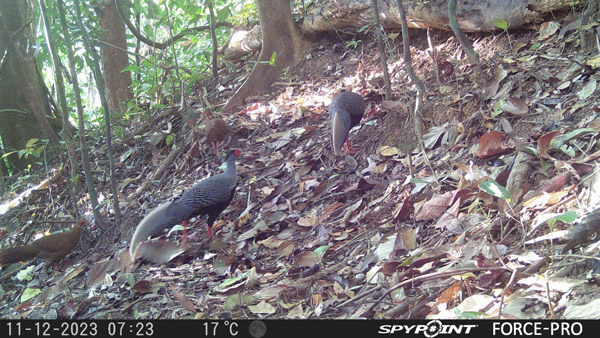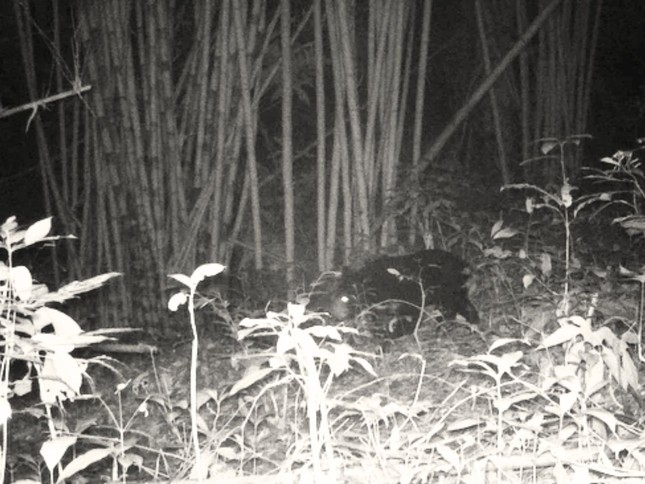On July 16, the Management Board of Chu Mom Ray National Park, Quang Ngai province, said that the unit had deployed the installation, management and operation of 320 camera trapping devices to monitor biodiversity. Thereby, the board discovered many rare animals in the garden, which are on the endangered list and need to be protected.
Every year, garden staff organize 4 field inspections, collecting information from camera traps. The equipment was installed in many different locations, from the forest cover to deep inside the forest.
Mr. Dao Xuan Thuy - Director of Chu Mom Ray National Park Management Board - said that the garden has a total area of 56,249 hectares, located in the southwest of Quang Ngai province (in the communes of Sa Thay, Ro Ko, Mo Rai, Ya Ly, Sa Loong and Bo Y).
The forest has high biodiversity, with more than 1,000 animal species (including 112 species on the list of endangered, precious, and rare species prioritized for protection) and 1,895 plant species (including 192 endemic, precious, and rare species).

Every year, garden staff develop plans and implement solutions to protect and sustainably preserve endemic, endangered, precious and rare animals and plants.
Information from camera traps not only records images of wildlife species but also humans, helping the National Park Management Board have an overview of the distribution, as well as identify the risks of impacts and harms to wildlife, landscape and ecosystems.

Recently, camera traps have recorded the image of a horse bear appearing in Chu Mom Ray National Park - a very rare animal, almost extinct in the wild.
The horse bear is also known as the black bear of Tibet, the Himalaya black bear or the Asian black bear. This species is listed in the World Red Book (IUCN), belonging to the group of vulnerable animals.
In addition, the camera trap has just recorded the image of 4 goose cows in stable health. This is a rare animal, often moving and has no fixed habitation.
Goats are distributed mainly in Southeast Asia and some other countries. This species is listed in the Red Book and is strictly prohibited by Vietnamese law from all acts of hunting and harming.
In 2004, Chu Mom Ray National Park was recognized by the Association of Southeast Asian Nations as an ASEAN Heritage Park.










